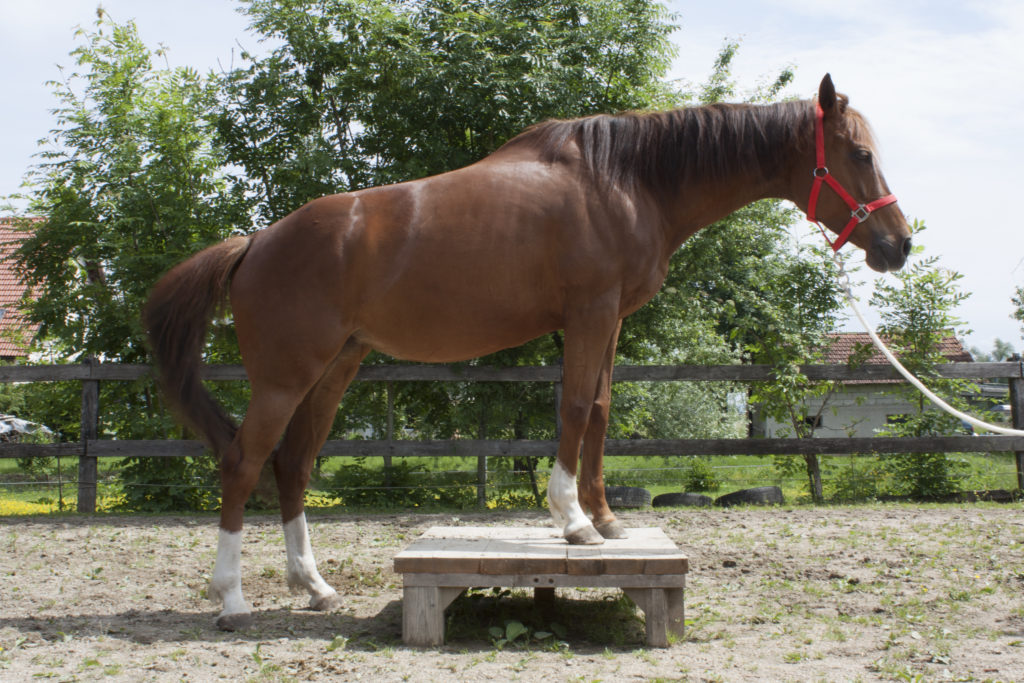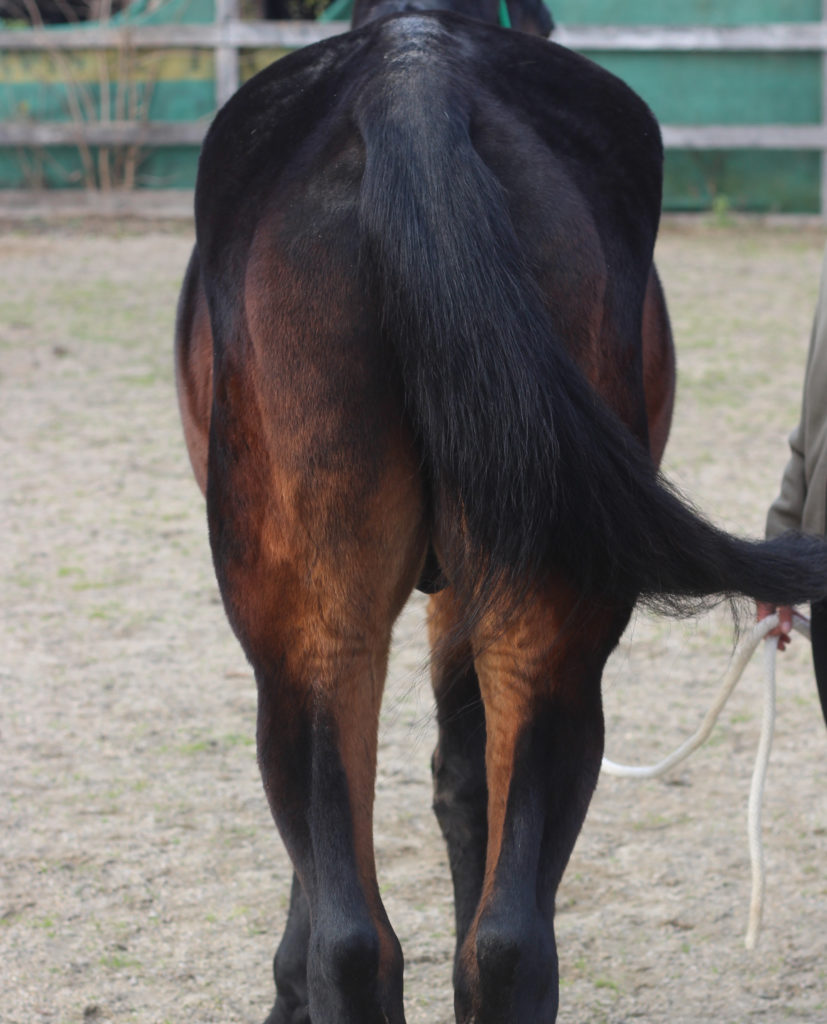Continued from here
By Ann Ramsey BS, CERA, APF-I,
CHECK WITH YOUR HANDS
The stifle can easily be felt with your hands. Place your hand over and around the patella. In a standing horse the patella may move upward into its fixed position. Have a handler ask the horse to take a step forward while you leave your hand there. On a healthy stifle joint you’ll feel the patella glide forward into your hand in a smooth uniform movement.
In horses with stifle pain there may be fluid around the joint, and when asked to step forward you’ll feel a delayed action, and then the patella can abruptly jump forward. Sometimes you can hear an audible ‘clicking” sound. This is the strumming action of the medial patellar ligament momentarily catching on the trochlear ridge of the femur. A word of warning, horses who are in pain may not tolerate this touching and can kick. If this is the case, step back and simply visually appraise the movement. Always use good judgement and have someone help you.
This is a helpful assessment for your use on your own horses’ joints. It takes time and lots of practice to actually differentiate, but it’s helpful for horse owners and trainers to be aware of what normal versus abnormal stifle function looks and feels like. This assessment will not replace a manual and lameness exam by a veterinarian who should be contacted to diagnose a true disfunction.

WHO’S VULNERABLE?
Any horse may be affected, however horses with straight hind limb conformation are most vulnerable. Horses who are croup high are also commonly plagued. It is typical to see young horses with croup high conformation suffer a bought of what’s commonly called “sloppy” stifles. This usually resolves as the horse finishes growing and becomes balanced or because they are put into training which tightens and stabilizes the joint.
Horses coming off prolonged rest due to another unrelated injury, may have weak stifles that need to be strengthened before returning to regular ridden work. Additionally, some horses due to their adult conformation will need regular stifle strengthening exercises as part of their maintenance programs.
REHABILITATION
Here’s the good news, horses with this diagnosis can make a full recovery so long as no permanent damage has occurred. It is critical to have a vet diagnose the muscle weakness and rule out any joint or ligament damage before beginning rehabilitation protocols.
Prescribed graduated exercise is the remedy; The quadriceps, biceps femoris, and tensor facia latae must all regain tone and coordination to recover the smooth gliding action of the patella.
Walking and trotting in straight lines and over ground poles is commonly the first step. Tail pulls to the side can be used to strengthen the tensor facia latae. And cavaletti are eventually incorporated as well. Simple additions to care such as cold hosing and NSAIDS are often used to help progress the rehabilitation.
It is also critical to address the long back muscles which may be painful and spastic due to bracing. Massage and core conditioning exercises are key in restoring healthy function of the lumbar spine.
Horse owners are usually able to dispense the required exercises with some guidance from a veterinarian and a rehabilitation assistant. It will involve spending lots of time with your horse, which most of us enjoy anyway. Or the rehabilitation can be dispensed by an experienced trainer at your own barn.
BE INFORMED!
As horse owners we are the first line of protection and the best advocates for our animals. We know them better than anyone else because we spend the most time running our hands over them. We can learn to notice the earliest signs of subtle discomfort, and steer our companion athletes towards diagnoses and care. We must stay informed about all aspects of horse health, including the musculoskeletal system.
The stifle is a critical joint and catching muscle weakness and accompanying joint dysfunction could prevent further lameness and associated joint damage. Strengthening the muscles that surround and support the stifle on any horse will only benefit his long-term soundness and increase his comfort and athleticism.
IF YOU LIKED THIS POST, YOU MAY ALSO BE INTERESTED IN THE FOLLOWING CONTENT:
ONLINE COURSE: https://www.equitopiacenter.com/shop/how-to-recognize-the-24-behaviors-indicating-pain-in-the-ridden-horse-dr-sue-dyson/
VIDEO: https://www.equitopiacenter.com/videos/recognizing-subtle-lameness-part-one-of-a-four-part-series/
WEBINAR RECORDING: https://www.equitopiacenter.com/help-my-horse-needs-reeducating-part-1/




